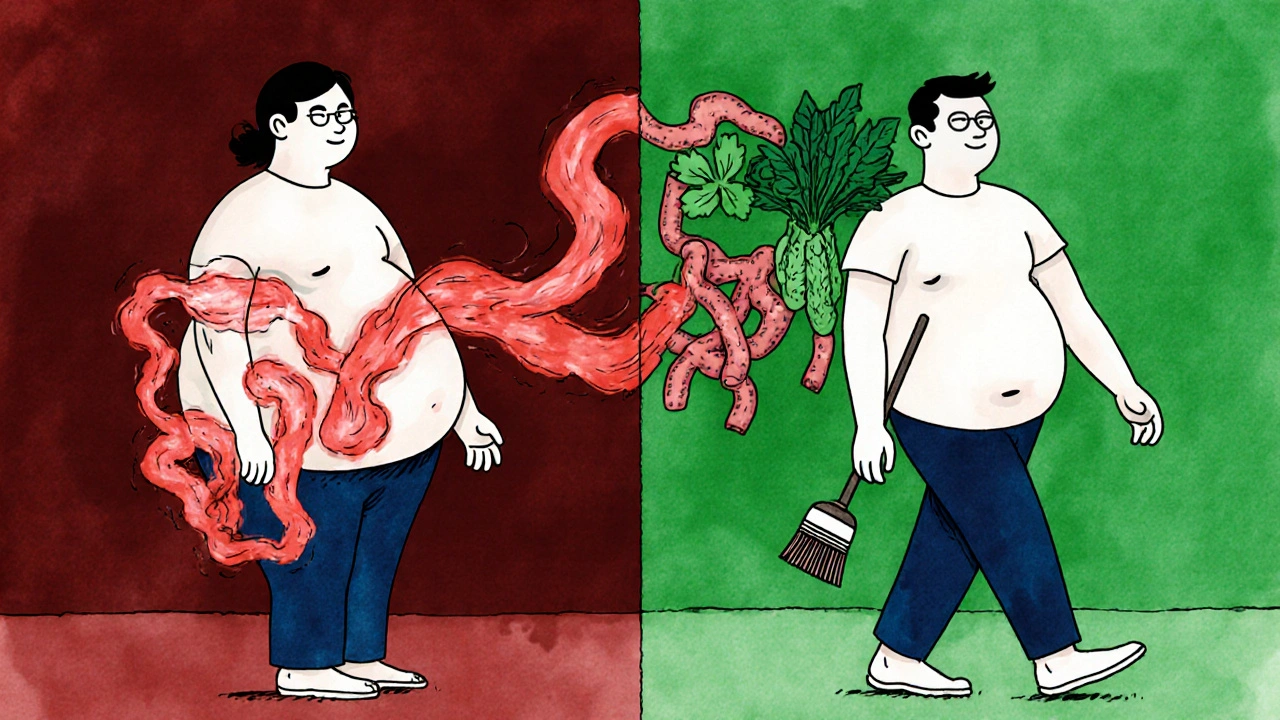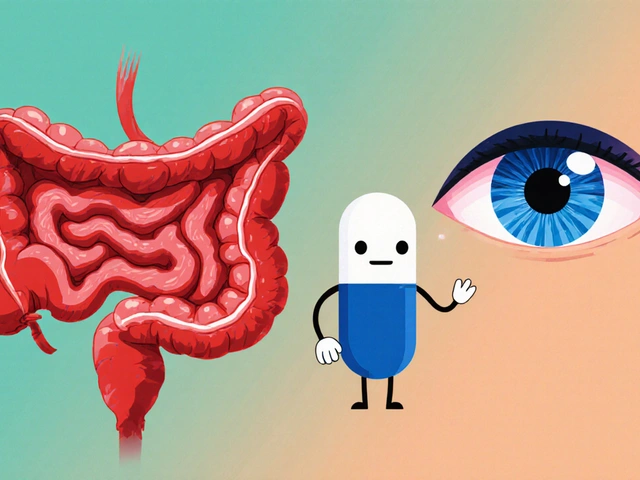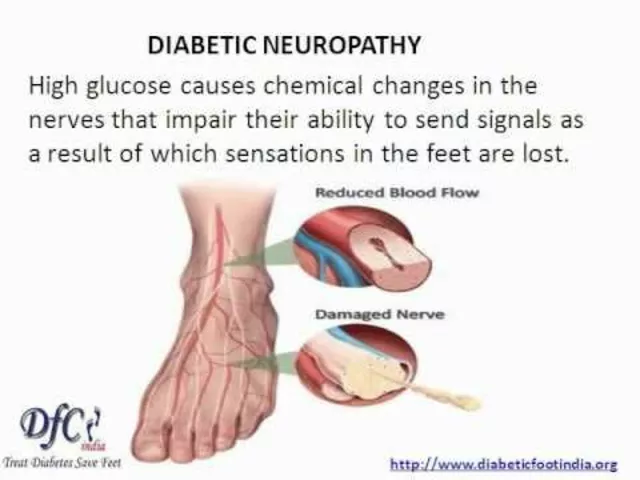Imagine your body is a car. One warning light on the dashboard might be annoying, but you can still drive. Now imagine five lights come on at once - engine overheating, low oil, brake fluid leak, battery dying, and tire pressure low. You don’t just fix one. You pull over. That’s what metabolic syndrome is: five warning lights flashing at the same time, telling you your heart is in danger.
What Exactly Is Metabolic Syndrome?
Metabolic syndrome isn’t one disease. It’s a group of five health problems that happen together and make your risk of heart disease, stroke, and type 2 diabetes skyrocket. You don’t need all five to be in trouble - just three. And if you have three, your chance of having a heart attack or stroke doubles. Your risk of developing type 2 diabetes goes up five times. The five signs are:- Abdominal obesity: Waist size over 40 inches (102 cm) for men, or 35 inches (88 cm) for women. For people of Asian descent, the numbers are lower - 35 inches for men, 31 inches for women. This isn’t just belly fat. It’s deep fat around your organs, called visceral fat, which is toxic to your metabolism.
- High triglycerides: Levels at or above 150 mg/dL (1.7 mmol/L). These are fats in your blood that spike when you eat too many carbs and sugars.
- Low HDL cholesterol: Below 40 mg/dL for men, below 50 mg/dL for women. HDL is the "good" cholesterol that cleans up artery gunk. When it’s low, your arteries get clogged faster.
- High blood pressure: 130/85 mmHg or higher. Even if it’s just slightly elevated, it’s a red flag when it shows up with other signs.
- High fasting blood sugar: 100 mg/dL (5.6 mmol/L) or more. This isn’t diabetes yet - but it’s the warning siren before the crash.
These aren’t random. They’re linked. And the link? Insulin resistance.
Why Insulin Resistance Is the Root Cause
Your body uses insulin to move sugar from your blood into your cells for energy. When you eat too many refined carbs and sugars over years, your cells start ignoring insulin. That’s insulin resistance. Your pancreas responds by pumping out more insulin to compensate. But that extra insulin doesn’t fix the problem - it makes things worse. High insulin levels:- Push your liver to make more triglycerides
- Make your kidneys hold onto salt, raising blood pressure
- Lower your HDL cholesterol
- Keep fat stored in your belly instead of burning it
This creates a vicious cycle. Belly fat doesn’t just sit there - it releases inflammatory chemicals that make insulin resistance even worse. It’s not just about being overweight. It’s about how your body processes food. Two people can weigh the same, but only one has metabolic syndrome - because of how their body handles sugar and fat.
It’s Not Just About the Numbers
Many people find out they have metabolic syndrome by accident. They go to the doctor for high blood pressure, get a blood test, and discover their glucose is up. Or they’re told their cholesterol is off, then realize their waist is too big. But doctors often treat each number separately - the blood pressure med, the statin, the diabetes pill. Rarely do they step back and say: "You’ve got a cluster. This is a system failure." A 2022 survey on HealthUnlocked showed that nearly 7 out of 10 people with metabolic syndrome weren’t diagnosed as such - even though they had three or more risk factors. Their doctor saw hypertension. Or high triglycerides. But not the bigger picture. That’s dangerous. Treating each piece alone is like fixing one tire while the engine is on fire. The real fix isn’t more pills - it’s lifestyle change. And it works.
The Proven Way to Reverse It
The Diabetes Prevention Program (DPP), a landmark study funded by the U.S. government, showed that people who lost just 7% of their body weight - about 15 pounds for someone weighing 200 - and exercised 150 minutes a week (like brisk walking) cut their risk of developing type 2 diabetes by 58%. That same program also reversed metabolic syndrome in 41% of participants over 10 years. What did they do?- Reduced daily calories to 1,200-1,500 for women, 1,500-1,800 for men
- Kept fat under 25% of total calories
- Ate mostly whole foods: vegetables, lean protein, beans, whole grains, nuts
- Walked, biked, or swam 30 minutes a day, five days a week
Results? In six months, most people dropped 5-12% of their body weight. Their waist shrank. Blood pressure fell. Triglycerides dropped. HDL went up. Fasting sugar normalized. Some no longer met the criteria for metabolic syndrome at all.
Real people report this too. On Reddit’s r/MetabolicSyndrome, users shared that after joining structured programs, they lost an average of 7.3% of their body weight in six months. One man, 58, from Ohio, lost 42 pounds. His triglycerides dropped from 320 to 110. His blood pressure went from 148/92 to 118/76. He stopped all three medications.
Why Most People Fail - and How to Succeed
The biggest reason people don’t stick with it? They think it’s about willpower. It’s not. It’s about environment, support, and structure. People who succeed have:- A clear plan - not just "eat better" but "I’ll have oatmeal with berries and nuts every morning"
- Accountability - a coach, a group, a friend
- Realistic goals - losing 1-2 pounds a week, not 10 in a month
- Focus on movement, not just weight - even if the scale doesn’t move, your waist does
Those who struggle often have hidden barriers: depression, shift work, lack of time, or conditions like PCOS that make insulin resistance worse. One woman on MyHealthTeams said: "I lost 30 pounds. Got my numbers back. Then I got pregnant. My hormones flipped everything. I gained it all back - and then some." That’s why coordinated care matters. A dietitian, an exercise physiologist, and a doctor working together make a huge difference. Mayo Clinic’s program found that 68% of patients reversed metabolic syndrome in a year with this team approach.

The Bigger Picture: Why This Matters Now
In the U.S., about 35% of adults - over 86 million people - have metabolic syndrome. That number has jumped 35% since 2000. It’s now the leading preventable cause of type 2 diabetes, responsible for 75-80% of new cases. The cost? $219 billion a year in healthcare. $143 billion in lost work. And it’s not just an American problem. The Global Burden of Disease Study predicts nearly 40% of adults worldwide will have it by 2030 - especially in South Asia and Latin America. But here’s the hopeful part: metabolic syndrome is reversible. Not just managed. Reversed. The DiRECT trial in the UK showed that people who lost 15 kg (over 33 pounds) through a structured low-calorie diet program had a 46% chance of completely reversing both type 2 diabetes and metabolic syndrome. No drugs. No surgery. Just food, support, and time.What You Can Do Today
You don’t need to wait for a diagnosis. If you have a waist over 35 inches (women) or 40 inches (men), and you’re not active, start here:- Measure your waist. Write it down. Do it again in a month.
- Swap one sugary drink a day for water or unsweetened tea.
- Walk for 20 minutes after dinner. Every day.
- Eat one extra serving of vegetables at lunch or dinner.
- Get your blood pressure checked - even if you feel fine.
These aren’t "diet" steps. They’re life steps. And they work faster than you think.
Metabolic syndrome isn’t your fault. It’s the result of decades of processed food, sitting too much, and stress. But it’s not your life sentence. The body is designed to heal - if you give it the right conditions. You don’t need to be perfect. You just need to start.
Can you have metabolic syndrome and not be overweight?
Yes. While abdominal obesity is the most common trigger, some people - especially those with a genetic tendency toward insulin resistance - can develop metabolic syndrome even at a normal weight. This is sometimes called "TOFI" - thin outside, fat inside. Their visceral fat is high, even if their BMI looks fine. That’s why waist measurement matters more than scale weight.
Are medications needed to treat metabolic syndrome?
Medications aren’t the first line - lifestyle is. But if your blood pressure, cholesterol, or glucose stays high after 3-6 months of lifestyle changes, your doctor may prescribe drugs to lower each risk factor individually - like a statin for cholesterol, metformin for blood sugar, or an ACE inhibitor for blood pressure. There’s no pill that treats metabolic syndrome as a whole, which is why lifestyle change is so critical.
Does metabolic syndrome increase stroke risk too?
Absolutely. The same factors that cause heart disease - high blood pressure, high triglycerides, low HDL, insulin resistance - also damage blood vessels in the brain. People with metabolic syndrome have a 1.5 to 2 times higher risk of stroke compared to those without it. Controlling these factors reduces that risk significantly.
Can children get metabolic syndrome?
Yes. With rising childhood obesity, metabolic syndrome is now seen in teens and even pre-teens. The same five criteria apply, adjusted for age and sex. Early diagnosis is crucial - because the longer these risk factors are present, the harder they are to reverse. Schools and pediatricians are starting to screen at-risk kids using waist measurement and blood tests.
Is metabolic syndrome the same as prediabetes?
No - but they often overlap. Prediabetes means your blood sugar is higher than normal but not yet diabetic. Metabolic syndrome includes prediabetes as one of its five components, but also adds high blood pressure, abnormal cholesterol, and abdominal fat. You can have prediabetes without metabolic syndrome - and vice versa. But if you have both, your risk is even higher.
How long does it take to reverse metabolic syndrome?
Some people see improvements in as little as 6 weeks - especially with blood pressure and triglycerides. But full reversal usually takes 6 to 12 months of consistent effort. The key is not speed - it’s sustainability. Losing 1-2 pounds a week, walking daily, and eating whole foods builds habits that last. Quick fixes come and go. Real change sticks.






9 Comments
OMG YES. I had metabolic syndrome and thought I was just "a little chubby" until my doc laid it all out. Lost 38 lbs in 8 months with just walking and swapping soda for sparkling water. My triglycerides dropped from 410 to 102. No meds. Just food. 🙌
Man, this post hit me right in the feels. I’ve been living with this cluster for years and nobody ever connected the dots. I had high BP, high sugar, low HDL, and a waist that wouldn’t quit - but my doctor kept giving me three different pills and saying "keep doing what you’re doing." I didn’t realize it was all one system breaking down until I read this. Visceral fat isn’t just "belly fat" - it’s like your organs are being slowly poisoned by sugar and stress. And the insulin resistance part? That’s the real villain. It’s not about willpower. It’s about biology being hijacked by processed food and sedentary life. I started eating like my grandparents did - veggies, beans, eggs, meat, no plastic packaging. Six months in, I dropped 22 pounds, my blood pressure’s normal, and I actually sleep better. It’s not a diet. It’s a return to how humans were meant to eat. And yeah, it’s hard when you’re surrounded by fast food ads and sugary snacks everywhere. But if you start small - one swap at a time - your body will thank you. I’m 54 and feel like I’m 40 again. This isn’t magic. It’s medicine. Just the kind that doesn’t come in a bottle.
While the clinical presentation of metabolic syndrome is well-documented, the underlying pathophysiological mechanisms - particularly the role of adipose tissue as an endocrine organ - warrant deeper scholarly engagement. The assertion that lifestyle intervention alone can reverse the syndrome is empirically supported by the DPP and DiRECT trials; however, the generalizability of these findings across socioeconomically disadvantaged populations remains questionable. Furthermore, the omission of pharmacological adjuncts - such as GLP-1 agonists - in the therapeutic algorithm may represent an oversight, given their demonstrated efficacy in weight loss and insulin sensitization. A multidisciplinary approach, integrating nutrition science, behavioral psychology, and clinical endocrinology, is imperative for sustainable outcomes.
Look, I’m not a doctor. But I used to weigh 260. Now I’m 195. Same person. Just stopped eating pizza every night. Walked after dinner. Drank water. Didn’t need a fancy app or a coach. Just didn’t make it hard. If you got three of those five things? Start there. One change. Just one. You got this.
Oh wow, another "eat less, walk more" miracle cure. Let me guess - the real solution is just... capitalism? The fact that 86 million Americans have this and nobody’s talking about how our food system is engineered to make us sick? Corn syrup in everything. 12-hour shifts. No access to fresh food in half the country. And now we’re supposed to blame ourselves because we didn’t "just walk more"? 🤡 The DPP study? Great. But it was a controlled trial with paid coaches and free food. Real life? You’re working two jobs, your kid’s sick, and the only thing on sale is a 50-cent bag of chips. This post feels like telling someone drowning to just swim better. Meanwhile, Big Pharma’s selling you three pills for the same problem they helped create. Wake up.
Let’s be real - this is just liberal guilt wrapped in a lab coat. Who even defines these numbers? WHO? The same people who told us fat was evil and we should eat low-fat cereal? Now they say carbs are the problem? I’ve seen men with 30-inch waists who eat steak and eggs and run marathons - and they’re fine. Meanwhile, some 5’2" woman with a 36-inch waist is labeled "metabolically broken" because her triglycerides are 151? This is pseudoscience dressed up as health. And don’t get me started on the "reversal" nonsense. You can’t reverse genetics. You can’t reverse decades of American food culture with oatmeal and walking. This is fear-mongering disguised as empowerment.
Metabolic syndrome? More like METALIC SYNDROME - a covert operation by the WHO, CDC, and Big Ag to push plant-based diets and destroy the meat industry. The waist measurements? Arbitrary. The blood sugar thresholds? Manipulated. The real cause? Fluoride in the water, 5G radiation, and glyphosate in your bread. They don’t want you to know that your body is naturally designed to store fat as protection - until they poison you with carbs. And now they’re pushing "lifestyle changes" to make you dependent on expensive organic kale and personal trainers. Wake up. The reversal stats? Correlation ≠ causation. And the DiRECT trial? Funded by the same people who own the pharmaceutical companies that profit from your diabetes. This isn’t medicine - it’s mind control.
Bro, I'm from India and saw this in my uncle - normal weight, but waist 40 inches, sugar 112, triglycerides 280. He thought he was fine because he wasn’t "fat." Then he had a mini-stroke. We changed everything: no rice at night, walk after dinner, no sugar tea. In 5 months, his numbers were normal. No medicine. Just old-school habits: eat early, move daily, sleep well. You don’t need a gym. Just stop eating like you’re in a food court. Your body remembers how to heal - if you stop fighting it.
One thing I’ve learned from working with hundreds of people trying to reverse this: it’s not about perfection. It’s about consistency. You miss a day? Fine. You eat pizza? Okay. Just get back to walking tomorrow. Just drink water instead of soda next time. Just eat one more veggie. Tiny wins add up. And you don’t have to do it alone. Find one person - a friend, a coworker, even an online group - and just check in. That’s the secret sauce. Not willpower. Connection. You’re not broken. You’re just out of sync. And your body? It’s ready to come back.